04 Aug SEO for Images: See What You’re Missing in Your Visual Search Strategy via @MrDannyGoodwin
The visual aspect of communication and marketing has become increasingly important.
But why is SEO for images – and the general concept of visual search – still considered a little more than a marketing nice-to-have?
In his SEJ eSummit session, Gianluca Fiorelli detailed all the visual search opportunities you might be missing out on that can increase your organic traffic through the correct usage and optimization of images.
He also talked about how to get more and better organic traffic using Google Search, Images Search, Google Lens, Photo and Assistant.
Here’s a recap of the presentation.


Many SEO professionals underestimate the power of images and visual search.
What they don’t realize is that they’re missing out on a growing opportunity that has the potential to drive significant organic traffic and conversions.
The Most Natural Way of Searching
Using images and visuals is the most natural way of searching for things.
As Kevin Systrom, Co-Founder at Instagram, puts it:
“People have always been visual; our brains are wired for images. Writing was a hack, a detour. Pictorial languages are how we all started to communicate; we are coming full circle.
Even Amazon promotes visual search.
Amazon knows that visual search is perfect for shoppers who face two common dilemmas:
- “I don’t know what I want, but I’ll know it when I see it.”
- “I know what I want, but I don’t know what it’s called.”
However, when it comes to visual search, we should be aware that it’s harder for a machine to recognize images than voice.
Clay Bavor, VP, Virtual & Augmented Reality at Google, summed up this challenge:
“In the English language there’s something like 180,000 words, and we only use 3,000 to 5,000 of them. If you’re trying to do voice recognition, there’s a really small set of things you actually need to be able to recognize […] So the problem of search in vision is just vastly larger than what we’ve seen with text or even with voice.”
That said, advances in technology have made machines so much better at recognizing images – and more users are now relying on image search for a variety of purposes.
Variousstudies show how much visual search is being adopted by younger generations and how essential it is in most users’ digital shopping experience.
Visual search is especially important for ecommerce brands right now.
Who Is Investing in Visual Search?
As expected, big brands are investing heavily in visual search.
Fashion brands are already ahead of the curve, but they are not the only ones looking to leverage the channel.
Some of them include:
- Forever 21
- Wayfair
- Walmart
- Tommy Hilfiger
- Ikea
- Conforama
- Idealista
- Macy’s
If you think of visual search as a feature to offer to your users, the market has plenty of opportunities to start creating products like these.
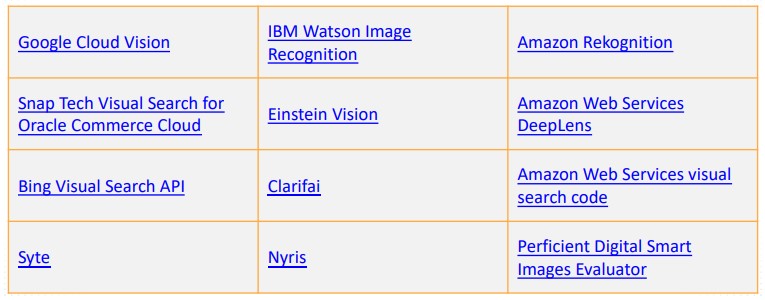

Search engines, marketplaces, and visual social networks – such as Google, Bing, Amazon, and Pinterest – are also investing a lot on visual and image search as it creates a new space for researches based on visual associations.
It can also lead to conversions with just one click from the image to the cart, eliminating passages that can, instead, cause the conversions to be lost.
Out of all these platforms, Google is the place where marketers can find more opportunities.
Google & Visual Search
In the past, Google was just about images search.


Right now, we’re seeing classic image search and visual search merging.
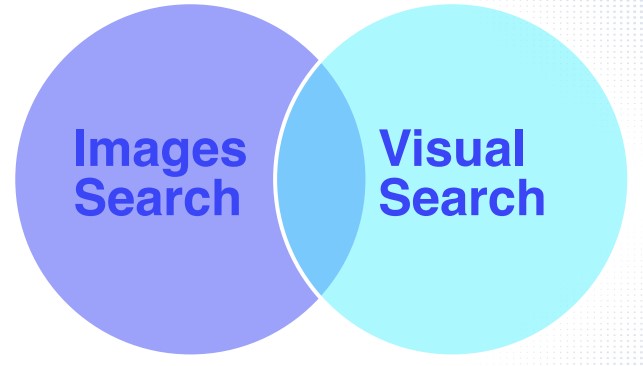

Soon, visual search is going to be part of a bigger concept of conversational search, where visual, voice and traditional textual search will all work together on a multi-device ecosystem.
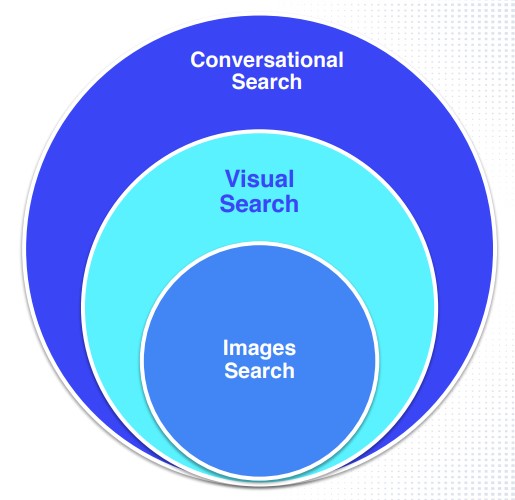

Google Patents on the topic give us a glimpse of how that might play out in the future.
Google Images
In recent years, Google Images has become a big source of clicks and traffic to websites from SERPs.
Sparktoro projects that Google Images holds around 20% of search engine market share.


Below is how a Google Images SERPs look like for the query [oversized glasses].
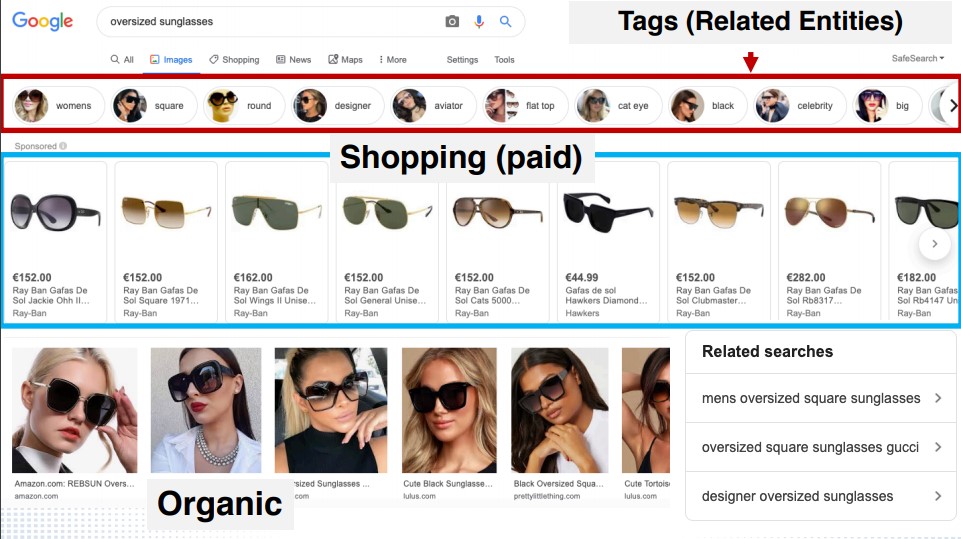

A Google Images SERP is typically composed of:
- Tags.
- Paid Shopping results.
- Organic Shopping results.
Tags (Related Entities)
The first thing we see at the top of each page are tags which are entities related to the query.
Tags have a behavior similar to People Also Ask boxes.
If we click on a tag and then go back with the back button of the browser, new tags will appear in the queue that are related to the tag opened and closed previously.
You can substantially create and obtain a very large list of related entities for your search.
Organic Shopping (Desktop)
In Google desktop, you can see images that are labeled with an icon.
When you click on that, there will be a preview that shows:
- The title tag.
- Relevant text taken from the product description.
- Structured data – Product schema (if available).
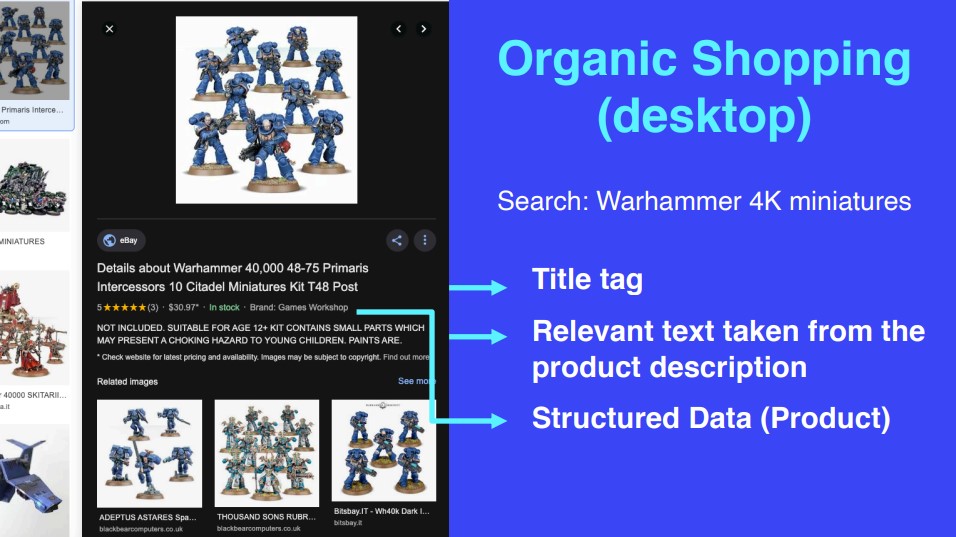

This preview is richer than if you’re searching for something in universal search.
Organic Shopping (Mobile)
In mobile, this is more evident.
If we have labeled our product pages with schema.org/Product, then Google will show the product label in the image, plus other information if available (“in stock”).
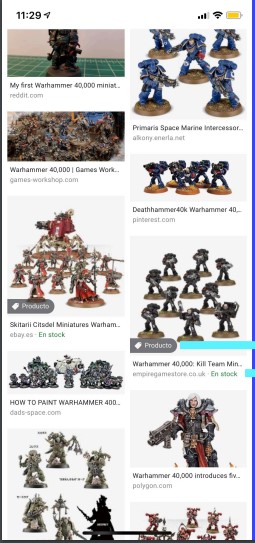

On mobile, Google also allows users to create Collections where you are able to search, save, and then recover all the products (or photos) that you want to investigate more.
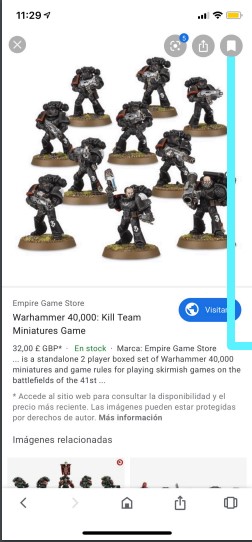

People can reach their collections easily through an icon at the bottom right of the user’s screen when they are in Google Images mobile.
Both from Google Images and from Collection, the extensive search results is the same as seen on desktop – the only difference is that it is in full screen.
Google Images is designed especially for mobile searches.
How to Identify Image Search Opportunities
Use a tool that tracks search features (such as SEMrush, Ahrefs, or Moz).
In SEMrush, go to your Project > Position Tracking or Organic Research > Position Filter to show only SERPs with Images Box.
You can then determine all SERPs that have the Image Box and Google Ads and/or Google Shopping.
These are keywords where organic visual shopping has huge possibilities for success.
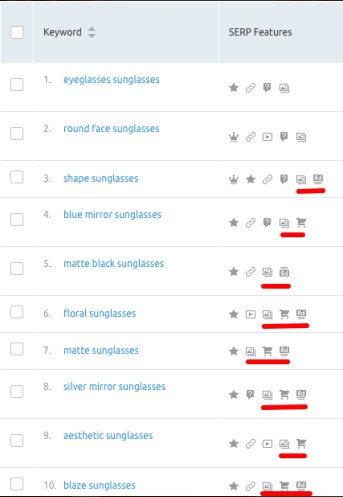

‘Images’ Is Not Only About Google Images
Remember, image is not only about Google Images.
Images are key in rich results, including:
- News AMP (required).
- News non AMP (recommended).
- Event (recommended).
- How To (recommended).
- Live Streaming (required).
- Local Business / Restaurants (required).
- Logo (required).
- Film (required).
- Product (required).
- Recipe (required).
- Video (required).
The Devil is in the Details
Google offers best practices for using imagery in your content.
Images Should Be At Least 1,200 Pixels Wide
For instance, for Google Discover, publishers are encouraged to include “compelling, high-quality images in your content, especially large images that are more likely to generate visits from Discover.”
Image URLs Must Be Crawlable & Indexable
According to Google’s Image sitemaps documentation:
“In some cases, the image URL may not be on the same domain as your main site. This is fine, as long as both domains are verified in Search Console. […] In addition, make sure that your robots.txt file doesn’t disallow the crawling of any content you want indexed.”
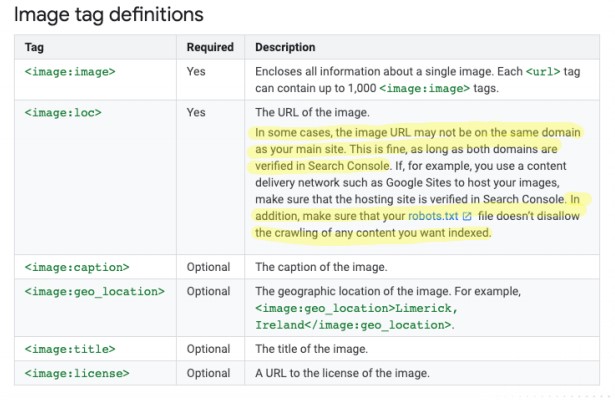

More Recommendations Depending on Your Situation
There are also a few other things to consider depending on your circumstance.
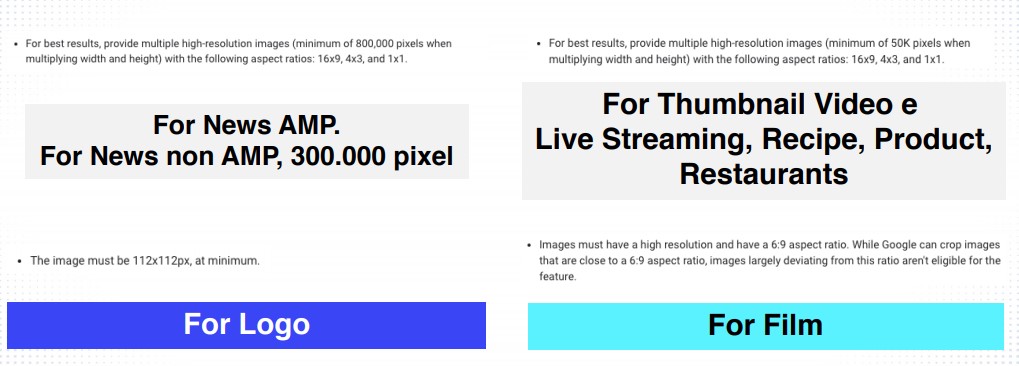

‘Images’ in Universal Search Are Not Just Rich Results
Images are not just image boxes or rich results.
They are also present in the Knowledge Graph and featured snippets.
Try to have your own images in your featured snippet.
In January 2020, Google rolled out a new addition to search results which made it easy to shop for popular products.
As Matt Southern reports:
“In order for merchants to have products surfaced in the Popular Products section, they’re encouraged to set up product feeds in Google Merchant Center and/or apply the appropriate structured data markup to product pages.”
Images Search: Optimization Tips
Make sure to follow these image SEO tips to improve your chances of getting on Google’s Image search results.
- Use descriptive images files name.
- Add alt text – this is a relevant “factor” and is also for usability.
- Add captions.
- Supply image description (recommended for Images Galleries).
- Create images XML Sitemaps (required).
- The content surrounding the images must be consistent with the image itself.
Google Lens
Another Google feature that’s worth exploring is Google Lens.
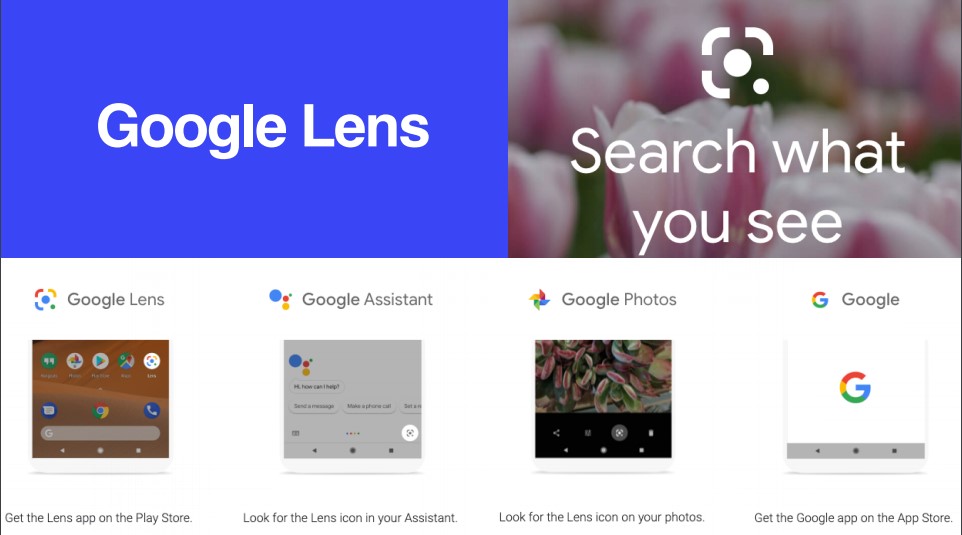

With Google Lens, people can frame a product and search for it on Google.
People can select a text and use it as a query in Google Search.
They can also frame a product, look for similar ones, and go shopping online or offline.
People can look for inspiration, and investigate products that capture their attention – and buy them on
the merchant’s site.
Visual Search: Optimization Tips
Here are some tips for optimizing for visual search.
- Follow Images Search SEO best practices.
- Use structured data, while respecting all the indications (ratio, width, etc.).
- Leverage high-quality images.
- Optimize images for PageSpeed.
- Choose the right format depending on the nature of the image.
- Compress images without losing their quality.
- Avoid mess. The main object of the image must be evident.
- If stock photos are used, modify them to make them unique.
- Republish all your images’ portfolio in Visual Social Networks (i.e., Pinterest).
- Remember that internal and external links have a value also for Images and Visual Search.
- The more pages use your image, the better it is tagged with related entities, hence more visible in Images Search.
The Takeaway
Using images and visuals is the most natural way to search.
But optimizing for this is not only about alt tags.
Google offers best practices and recommendations to help you leverage images correctly.
Don’t ignore or underestimate the power of image and visual search.
Start earning traffic from images.
Watch this Presentation
You can now watch Fiorelli’s full presentation from SEJ eSummit on June 2.
More Resources:
- Google Creates a New Way to Drive Traffic Via Image Search
- Google SEO 101: Image Search Best Practices & Changes Over the Years
- 11 Important Image SEO Tips You Need to Know
Image Credits
Featured Image: Paulo Bobita
All screenshots taken by author, August 2020
Sorry, the comment form is closed at this time.